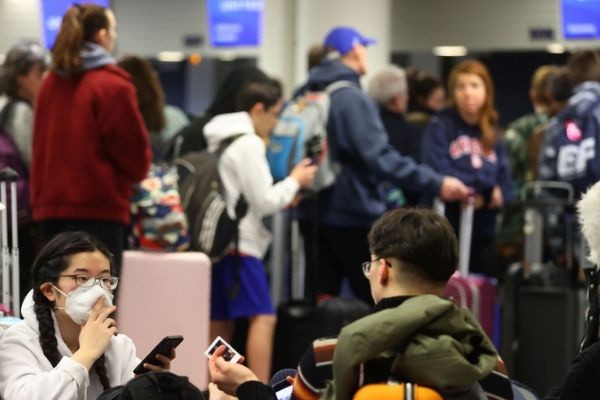
According to Marion Koopmans, head of the department of virus science at the Erasmus Medical Center in Rotterdam, Netherlands, once mild symptoms manifest but does not affect the carrier, it will spread the coronavirus to more susceptible individuals. This starts an outbreak when the infection is passed to other people.
She added that high levels of the virus can be in the upper respiratory tract, located in the nose and throat. Even if not feeling that sick, as some carriers are not bothered, a simple cough or sneeze will be enough for the virus to do its job.
This is how the coronavirus manages to spread fast when one unaffected carrier will spread the virus without even knowing it. Research from China says it will be 5 to 10 days before signs of sickness are detected.
Before this was known, carriers passed on the virus this efficiently as walking virus sacks. For these individuals, it is a cold or flu, compared to others that gets worse. These parameters make it hard to track these in unaffected carriers too.
Koopmans commented that this information was discovered as she and her colleagues were surveilling the progress of COVID1-19 in the Netherlands. Her organization did some screening of patients who travelled abroad until a few cases without a traceable origin were detected in the country. Now, she and her team were tracking and testing health care workers in the hospital, with cases.
The conclusion was they were mildly sick but very infectious to others. Spreaders can increase the infection rate.
Alfredo Garzino-Demo, a virologist based at the University of Maryland, affiliated with the University of Padua in Italy, commented that the coronavirus with mild symptoms is just like other viruses that can spread the virus and containment is not easy. He added that diseases have a window period when symptoms do not show but still able to infect others as well. This makes COVID-10 more dangerous.
Based on the data available, how these spreaders do not get sick make the contagion worse. This is why social distancing is a proactive way to starve COVID-19. Detecting these unaffected carriers by testing is one way to stem infections better and have fewer cases too. Marie-Paule Kieny, director of research at Inserm, endorses more testing to track the "super-carriers" better.
She added broad test is needed to know who they are and without an educated guess is not very safe for the majority. Knowing the exact people who needs testing will be best to lessen the negative effects of social distancing measure on countries.
Both the European countries and the U.S. is not doing any better when employing testing on their populations. Surveillance of populations will quell the next coming contagions better, much needed when social distancing is less emphasized.
Alfredo Garzino-Demo added that Rhesus Macaques seem to show the virus will not re-infect, but will lessen volatile viruses. Marion Koopmans, says that like other diseases "mild-reinfection" might occur. Both scientists echo valid arguments between them.
Koopmans related that genetic analysis done in the lab show the virus is not mutating that much yet to make it harmful. There's nothing major to cause alarm bell or concern.
Still, the goal to test and detect carriers who have almost none or just mild symptoms is important to prevent the spread of the coronavirus, especially that social distancing is not enough to starve the COVID-19.
Related article: Coronavirus Can Survive in Air and Surfaces, Infecting Victims
© 2025 HNGN, All rights reserved. Do not reproduce without permission.








